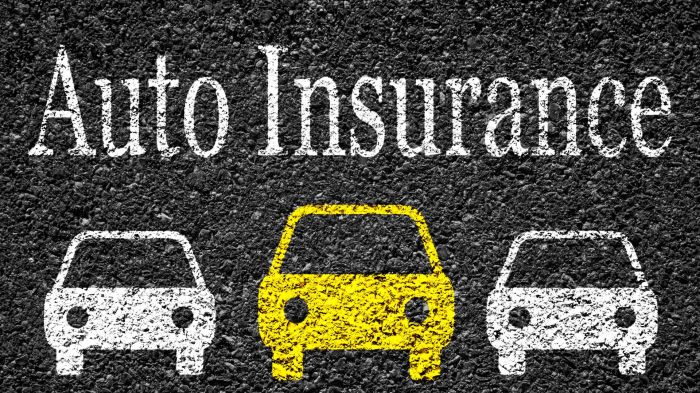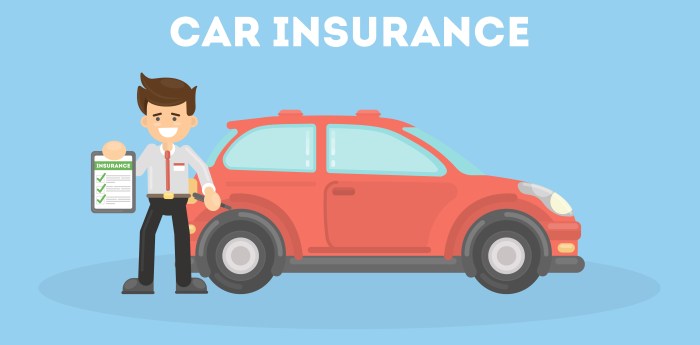The landscape of auto insurance is constantly evolving, shaped by technological advancements, shifting consumer expectations, and fluctuating economic conditions. Understanding the intricacies of auto insurance is crucial for every driver, ensuring they secure the best possible coverage at a fair price. This guide delves into the current state of auto insurance, exploring key factors influencing premiums, providing practical advice for finding the right policy, and offering insights into the future of this vital industry.
From the impact of telematics and autonomous vehicles to the nuances of claim processes and the importance of negotiating premiums, we aim to equip you with the knowledge and tools to make informed decisions about your auto insurance. We’ll examine various coverage options, highlight the factors that affect your rates, and provide actionable steps to help you secure the most suitable and cost-effective policy for your needs.
Factors Influencing Auto Insurance Premiums

Auto insurance premiums are not a one-size-fits-all proposition. Several interconnected factors contribute to the final cost, making it crucial to understand these elements to secure the most competitive rate. This section will detail the key factors influencing your premium.
Driving History
Your driving record significantly impacts your insurance premium. A clean driving history, characterized by no accidents or traffic violations, generally results in lower premiums. Conversely, accidents, especially those resulting in injuries or significant property damage, will substantially increase your rates. Similarly, multiple speeding tickets or other moving violations will negatively affect your premium. Insurance companies use a points system; each violation adds points, leading to higher premiums. For example, a driver with two at-fault accidents and three speeding tickets within a three-year period can expect significantly higher premiums compared to a driver with a spotless record. The severity of the offense also matters; a DUI conviction will have a far more substantial impact than a minor parking violation.
Age and Gender
Statistically, age and gender correlate with accident risk. Younger drivers, particularly those under 25, are generally considered higher-risk due to inexperience and higher rates of accidents. Insurance companies reflect this higher risk in their premiums. Older drivers, particularly those over 65, may also see higher premiums due to potential age-related driving limitations. Gender also plays a role, though its impact varies by insurer and location. Historically, male drivers, particularly young males, have been statistically associated with a higher risk of accidents, leading to potentially higher premiums compared to female drivers. However, this gap is narrowing in many regions.
Vehicle Type and Features
The type of vehicle you drive significantly impacts your insurance costs. Sports cars and luxury vehicles are often more expensive to insure than sedans or smaller vehicles due to their higher repair costs and greater potential for theft. Vehicle features also influence premiums. Safety features such as anti-lock brakes, airbags, and electronic stability control can lower your premiums as they reduce the risk of accidents and injuries. Conversely, vehicles with powerful engines or modifications may increase your premiums due to their higher performance capabilities and associated risks. For example, a high-performance sports car will likely have a higher insurance premium than a fuel-efficient compact car.
Location and Credit Score
Your location plays a significant role in determining your insurance rates. Areas with high crime rates, a high frequency of accidents, or severe weather conditions typically have higher insurance premiums due to increased risk. Insurance companies assess the risk based on claims data in specific geographic areas. Your credit score also influences your premiums. Insurers often use credit-based insurance scores to assess your risk profile. A good credit score generally indicates financial responsibility, which can translate to lower premiums, while a poor credit score may lead to higher premiums. This is based on the assumption that individuals with good credit are more likely to be responsible drivers and handle claims responsibly.
The Future of Auto Insurance

The auto insurance landscape is undergoing a dramatic transformation, driven by technological advancements and shifting societal norms. The advent of autonomous vehicles, the proliferation of telematics, and the rapid development of artificial intelligence are reshaping the industry’s core functions, from risk assessment to claims processing. Understanding these changes is crucial for both insurers and consumers.
Autonomous Vehicles and their Impact on Insurance
The widespread adoption of autonomous vehicles (AVs) presents both opportunities and challenges for the insurance industry. The potential for significantly reduced accident rates due to improved safety features in AVs could lead to lower premiums. However, liability in the event of an accident involving an AV becomes complex, requiring a re-evaluation of insurance policies and coverage. Current liability frameworks are largely based on driver error; with AVs, the responsibility may shift to the manufacturer, software developer, or even the owner, depending on the circumstances. This necessitates new insurance products designed to address this evolving liability landscape. For example, insurers may offer specialized coverage for AVs, focusing on cybersecurity risks and product liability rather than driver negligence. Furthermore, the shift in risk profile may lead to the development of usage-based insurance models for AVs, where premiums are based on factors such as mileage and driving conditions, rather than solely on the vehicle’s characteristics.
The Role of Telematics in Auto Insurance
Telematics, the use of technology to collect and analyze data from vehicles, is revolutionizing auto insurance. By using devices installed in vehicles, insurers can gather real-time data on driving behavior, including speed, acceleration, braking, and mileage. This data allows for the development of usage-based insurance (UBI) programs, which offer customized premiums based on individual driving habits. Drivers with safer driving profiles receive lower premiums, incentivizing better driving behavior and contributing to a reduction in accidents. Telematics also allows for faster and more accurate claims processing, as data from the vehicle can help determine the cause of an accident and the extent of the damage. For instance, a telematics device can record the speed and braking patterns leading up to a collision, providing valuable evidence in the claims process. This reduces processing time and disputes, benefiting both the insurer and the policyholder.
The Implications of AI and Machine Learning in Auto Insurance
Artificial intelligence (AI) and machine learning (ML) are transforming various aspects of the auto insurance industry. AI algorithms can analyze vast amounts of data, including driving behavior, vehicle data, and claims history, to create more accurate risk profiles and predict future claims. This allows for more precise pricing and personalized insurance offerings. ML models can also be used to detect fraud and automate claims processing, improving efficiency and reducing costs. For example, AI can analyze images of damaged vehicles to estimate repair costs more accurately, speeding up the claims settlement process. Furthermore, AI-powered chatbots can provide 24/7 customer support, answering policy-related questions and assisting with claims filing. These advancements contribute to a more efficient, customer-centric, and cost-effective insurance system.
Potential Future Scenarios for Auto Insurance
The illustration depicts three potential future scenarios for auto insurance. The first panel shows a traditional insurance model, with premiums largely based on demographic and vehicle factors. The second panel showcases a telematics-driven model, where personalized premiums reflect individual driving behavior. The third panel represents a future dominated by autonomous vehicles, with a shift in liability and a focus on cybersecurity and product liability insurance. The color palette transitions from muted tones in the first panel, representing the traditional model, to vibrant, dynamic colors in the latter panels, reflecting the dynamism and technological advancements driving the evolution of the industry. The overall style is clean and modern, employing data visualizations such as graphs and charts to illustrate the changes in premium costs and accident rates across different scenarios.
Outcome Summary

Securing the right auto insurance policy is a critical aspect of responsible driving. By understanding the current market trends, the factors influencing premiums, and the processes involved in filing claims, drivers can navigate the complexities of auto insurance with confidence. This guide serves as a starting point, empowering you to make informed decisions, negotiate favorable rates, and protect yourself financially on the road. Remember to regularly review your policy and adapt it to your changing circumstances to ensure you maintain optimal coverage.
Top FAQs
What is uninsured/underinsured motorist coverage?
This coverage protects you if you’re involved in an accident with an uninsured or underinsured driver. It helps cover your medical bills and vehicle repairs.
How often should I review my auto insurance policy?
It’s advisable to review your policy at least annually, or whenever there’s a significant life change (new car, address change, etc.).
Can I get my insurance premium lowered if I install safety features in my car?
Yes, many insurers offer discounts for safety features like anti-theft devices, airbags, and advanced driver-assistance systems.
What is the difference between collision and comprehensive coverage?
Collision covers damage to your car from accidents, regardless of fault. Comprehensive covers damage from non-accident events like theft, vandalism, or weather.